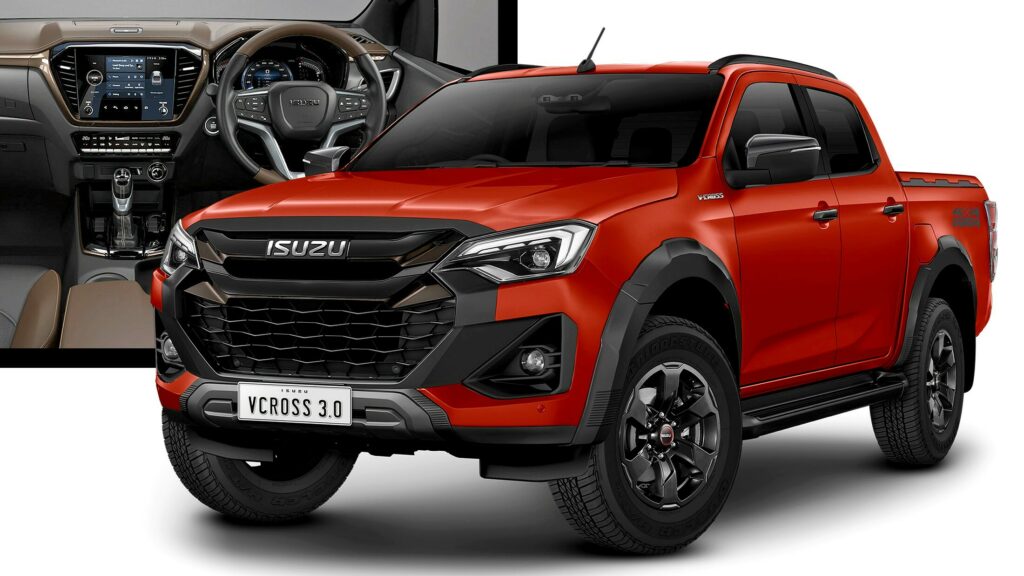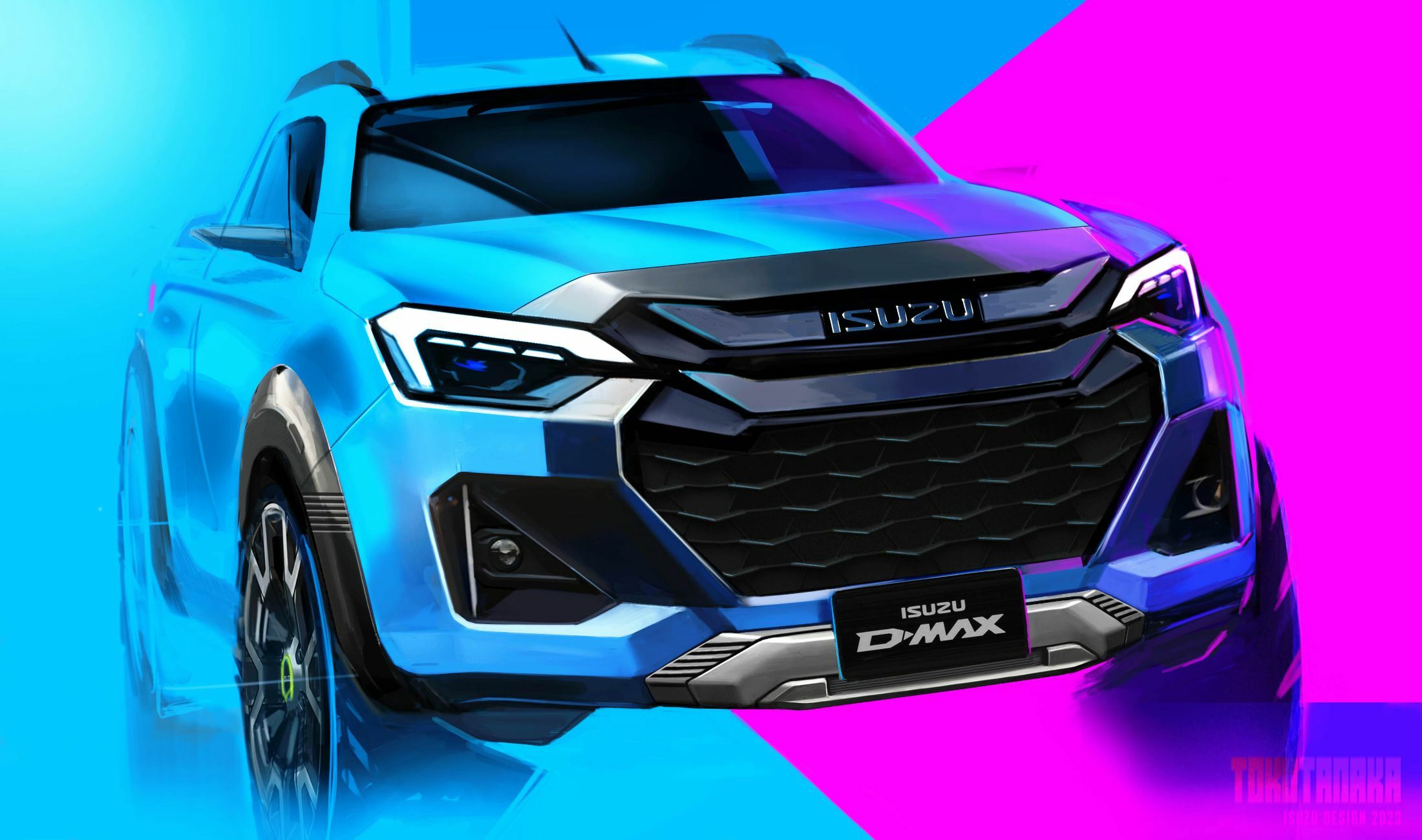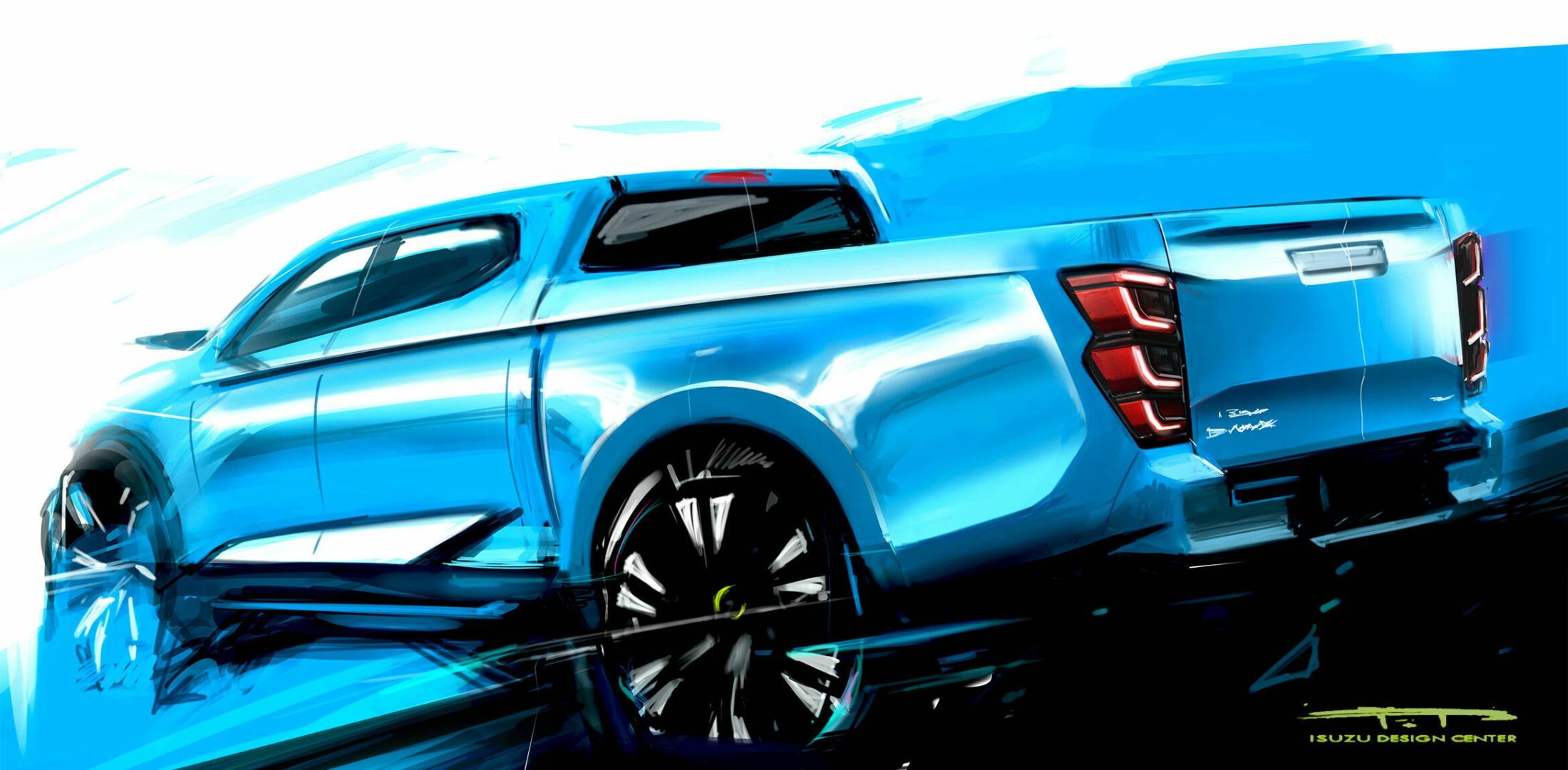Isuzu introduced the facelifted D-Max in Thailand, featuring a redesigned exterior, more technology inside the cabin, a new rough terrain mode, and safety improvements. The automaker also confirmed plans for a battery electric pickup set to be produced in Thailand initially for the European market.
The Isuzu D-Max is being updated exactly four years after the debut of the third-gen model in October 2019. The Ford Ranger and Toyota Hilux rival looks more modern than before, while retaining a variety of available bodystyles (chassis cab, regular cab, space cab, and crew cab).
More: One-Off Isuzu D-Max Arctic Trucks AT35 Basecamp Is Perfect For Adventure-Seekers
Changes are focused on the front end which features a redesigned grille with a 3D look, a new pair of headlights (Bi-Led tech in high-spec trims), and tweaked bumper intakes with air-curtains on the sides. The pickup also benefits from a new tailgate with a larger integrated spoiler and revised taillight graphics. The pictured D-Max V-Cross 4×4 flagship trim is the most rugged-looking of the bunch thanks to the extra plastic cladding around the grille, the aluminum-style skid plate, the wide fender extensions, the matte black 18-inch alloy wheels, and other add-ons.
Inside, the dashboard looks familiar, albeit with new trim options and upgraded technology. The 9-inch touchscreen for the infotainment with new touch-sensitive buttons/shortcuts and physical knobs for the volume and tune underneath is combined with a 7-inch digital instrument cluster. Isuzu added USB-C ports for the front and rear passengers, and a new key with remote engine start function.
The powertrain lineup appears to be unchanged from the pre-facelifted model, including two four-cylinder turbodiesel options. The base 1.9-liter mill produces 148 hp (110 kW / 150 PS) and 350 Nm (258 lb-ft) of torque, while the more potent 3.0-liter unit is good for 187 hp (140 kW / 190 PS) and 450 Nm (332 lb-ft). Depending on the version, power is transmitted to either the rear (2WD) or to all four wheels (4WD) via a 6-speed manual or a 6-speed automatic.
Despite the carry-over engines, the pickup is said to offer improved 4×4 driving performance thanks to tweaked electronics. More specifically, the traction control has been expanded to when the electronic rear differential lock is activated, while there is a new “rough terrain mode” assisting drivers by controlling the braking and engine RMP in more demanding off-road scenarios. Safety equipment has been improved thanks to a new ADAS camera with a heating function for cold weather, and more systems, including the expansion of the adaptive cruise control to the manual versions.
More: 2025 Ford Ranger Plug-In Hybrid Revealed With Over 28 Miles Of EV-Only Range
Sales of the 2024 D-Max are scheduled to start on October 12 in Thailand, with other global markets set to follow gradually. Prices start from 540,000 Thai Baht ($14,551) for the cheapest regular cab 2-door and 2WD version, reaching up to 1,257,000 ($33,876) for the flagship 4-door V-Cross 4×4 trim.
Currently, the Isuzu D-Max is offered in more than 100 countries and regions in Asia, Europe, the Middle East, Africa, Central America, South America, and Oceania. However, Thailand remains the strongest market for the pickup, accounting for 180,000 sales out of the 340,000 global sales in 2022.
BEV Pickup Is Coming
During the launch of the facelifted D-Max in Bangkok, Shinsuke Minami, Isuzu President and COO, revealed plans for a new fully electric pickup. The BEV will be produced in Thailand, but it will initially be available in Europe before Isuzu examines the possibilities of offering it to other markets. Unfortunately, the company didn’t provide more information about the model and hasn’t set a timeline for its launch.








































